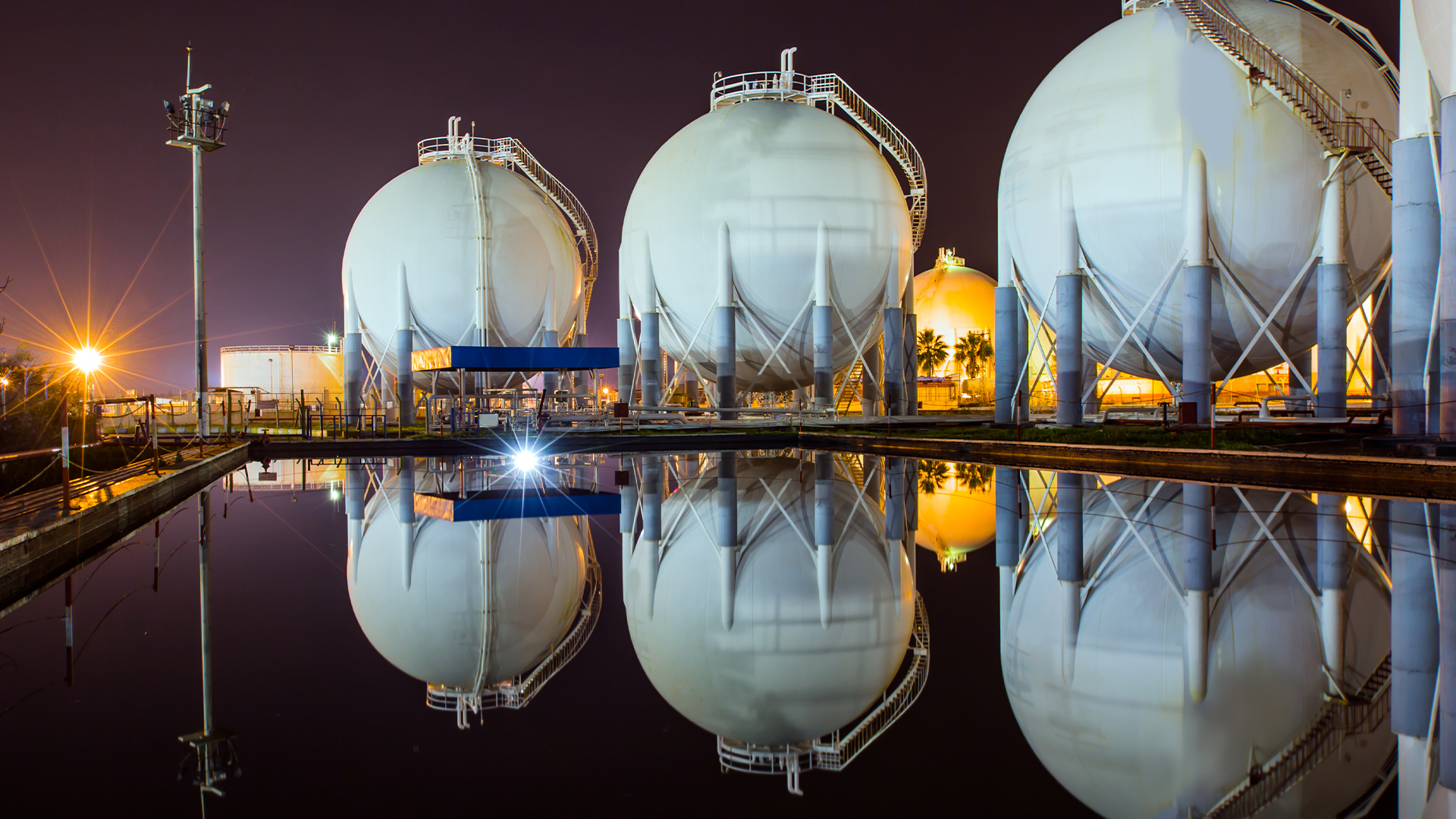This article was first published in December 2021 by Project Finance International in the PFI Yearbook 2022.
The last eighteen months have seen a rapid rise in investment by infrastructure and private equity funds in Australian LNG infrastructure. Historically, institutional investors – even those with an energy focus – have not been pivotal or active players in investing in or sponsoring the mega-LNG projects in the Asia-Pacific region.
Their investment appetite has, typically, not been compatible with the combination of exposure to commodity price risk, development and construction risk for a greenfield project, and the significant amount of initial capital outlay for returns that will only be realised in the mid-to-longer term. In addition, for operational assets, there has been resistance by the energy majors to partnering with investors with different investment horizons and approaches to operations in a volatile market.
However, shifting market forces, with soaring gas prices, against the backdrop of a perpetually-evolving energy transition landscape, have created significant opportunities for non-traditional players to invest in these projects and related infrastructure. Coupled with the ability of the infrastructure funds to invest in brownfield assets, where the energy majors have significant sunk capital and institutional investors can leverage the existing infrastructure, this has driven the recent spate of transactions.
While only a handful of the mega-LNG projects in the region have been developed by way of project finance, institutional investors are procuring debt to partially fund their investments in LNG infrastructure. This is principally a function of economics and the ease with which debt funding can be obtained, on commercially competitive terms that allows fund capital to be deployed elsewhere. It also highlights the approach of debt providers, often debt funds, with respect to the risk profile of funding operating LNG infrastructure, even in circumstances where the lenders are not benefiting from security over the underlying project assets. The lenders’ security package and diligence is primarily focused on the contractual arrangements underpinning the revenue streams of operating assets, rather than applying a project finance-style, bankability analysis of a greenfield project.
As a result, the brisk rate of institutional investment in LNG infrastructure in Australia is expected to continue.
Recent investments
- Initially, as was announced in December 2020, Global Infrastructure Fund (GIP) acquired a 26.25% interest in the Queensland Curtis LNG (QCLNG) facilities for approximately US$2.5bn. This was a landmark transaction as it represented one of the first significant acquisitions by an infrastructure player in mid-stream LNG assets, paving the way for further investment, not only within Australia, but around the world.
- Then, in July 2021, TotalEnergies and GIP announced that TotalEnergies had received a US$750m investment from GIP in connection with its 27.5% interest in the Gladstone LNG Project in Queensland. The highly structured and complex transaction involved a synthetic infrastructure agreement, whereby TotalEnergies retained its 27.5% interest in the joint venture that operates the LNG facilities, but agreed to pay GIP a throughput-based tolling fee, based principally on TotalEnergies’ share of gas processed through the downstream facilities1.
- The synthetic tolling arrangements were required to facilitate the segmentation of the commodity price from the infrastructure return, essentially retrofitting the transaction structure to establish an infrastructure toll. GIP’s investment was partially debt-funded by a combination of Japanese, Australian and European financiers.
- In October 2021, it was reported that global energy investor EIG Global Energy Partners (EIG) had signed the acquisition and finance documentation to acquire a 10% shareholding in Australia Pacific LNG (APLNG) from Origin Energy. This is the first private equity sponsor-led acquisition of an interest in an integrated LNG project globally. EIG’s investment was partly debt-funded and, following satisfaction of the conditions precedent and completion of the sale, ASX-listed Origin’s share in APLNG will drop to 27.5%, with ConocoPhillips continuing to hold 37.5%, Sinopec holding 25% and EIG holding 10%. Origin will remain as the operator.
- Finally – and most recently – in November 2021, Woodside and GIP announced that GIP has acquired an interest from Woodside in its Pluto LNG expansion project, the announcement of which was one of the precursors to Woodside reaching FID on its Scarborough LNG project. The deal was a US$4.9bn commitment by GIP to purchase a 49% interest in the US$7.6bn onshore LNG processing unit, which will treat the gas from the offshore Scarborough field in Western Australia. The deal did not require an upfront payment from GIP for the acquisition, but a commitment to fund its 49% of the construction costs to build Pluto-2, although it has been reported that Woodside will bear most of the regulatory, carbon and construction cost risks2 balancing the risk profile of the investment to a tolerance that GIP will be more comfortable with.
As can be seen, varying investment structures are being implemented, depending on the existing stage and structure of the relevant project or asset (that is, a traditional, fully integrated, incorporated ownership structure, compared with an infrastructure tolling model). At times, simple share or asset sale structures can be adopted; however, as with the GIP and TotalEnergies transaction, there may be a need, or desire, to establish a synthetic tolling mechanism to detach the commodity price from the return that can be realised on the infrastructure. This can lead to complex transaction structures and legal documentation packages, but allows the investment to be made without unravelling and disrupting the existing project structure or the joint venture interests. Regardless of the investment structure and model, the infrastructure funds’ increased use of debt to finance the investments and accelerate returns is becoming a key theme.
Market forces
The catalyst and main driver for the range of recent investments can be attributed to a number of market forces. Recent market volatility, with historically high gas and LNG prices, is the obvious factor; however, infrastructure and PE funds are generally not swayed by temporary upside motivations. That said, the natural reaction of the market to price volatility is such that it will push customers to implement longer term offtakes, with governments, corporates and utilities all looking to bring certainty to their supply, which will strengthen LNG business models3. This is highly attractive to infrastructure and private equity funds as it brings more certainty to revenue streams and returns on investment.
Another factor is the ability of infrastructure funds to invest in existing, brownfield projects, where a significant amount of the capital outlay to develop the project or related infrastructure has already been funded by the existing sponsors.
What makes this attractive to institutional investors is twofold:
- First, funds have typically not been inclined to accept and absorb development and construction risk, as well as commodity price risk, over the course of a construction phase. However, investing in an existing project with developed and operating infrastructure significantly de-risks the acquisition. The investment may come at a premium, but that is often viewed as a small price to pay when looking for opportunities that provide higher degrees of certainty with respect to an investment return, and in many cases the operational assets are already returning significant revenue streams to their shareholders.
- Second, the existing players and sponsors on a number of the Australian LNG projects have contributed large amounts of capital, and in many cases are now looking to monetise their investments. This may involve simply freeing up capital or deploying it to ventures that will facilitate lowering their carbon footprint and, in some cases, reposition their business away from traditional oil and gas. This is increasing the scope for non-traditional investors to obtain a stake in such projects and infrastructure, in circumstances where market opportunities are driving demand for such investments.
The rise of backfill gas supply is also bringing robustness to Australian LNG midstream assets, diversifying the means by which revenue is generated and de-risking investments. QCLNG, Gladstone and Pluto-2 are all examples of midstream assets that benefit from backfill gas supply.
Finally – and perhaps one of the most important factors – is the evolving nature of the energy transition landscape.
Energy transition
Infrastructure and private equity funds are clearly taking a long-term, holistic, view of the energy transition and how it is likely to play out in the years to come.
Meg O’Neil, CEO of Woodside, recently wrote: “More than half of the world’s population lives in the Asian region – our major customer market. Many of these countries, including Korea, Japan and China, have committed to net zero yet currently have a significant reliance on coal to meet their energy needs. Woodside expects our customers will use LNG to replace coal, firm up renewables, or for use in hard-to-abate industrial sectors.”4 This view is also supported by infrastructure funds, having regard to the number – and size – of recent investments, as well as those infrastructure debt funds that are providing debt to support the investments.
There is a widespread belief that, in markets such as South-East Asia, where coal-fired power dependence remains highly prevalent, it simply isn’t realistic to expect a rapid shift to renewables as a means of displacing coal. In Indonesia, for example, in 2020, the thermal power share was 85.6%5. This is a country that accounts for around two-fifths of the Association of Southeast Asian Nations energy consumption6.
At present, one of the obvious replacements for coal, which can significantly reduce emissions by comparison, is gas. Existing turbines can be re-purposed to allow a gas feed and gas provides reliable baseload and despatchable power in a way that renewables are not presently able to match. To that end, LNG, as a transition fuel, will surely have a large part to play in the phasing down of coal and reducing emissions, while also providing a reliable power source. This is driving demand and is the reason why institutional investors are viewing LNG as a transition fuel that offers significant opportunity over the medium to longer term.
The view of gas as a transitional fuel also explains the increased investment in operational assets, which balances the benefits of short-to-medium-term demand for gas against the capital costs and the time required for greenfield developments, which may be seen as too risky in the context of a global energy transition.
Recent events in Europe also provide an interesting case study. Many of the European countries have an accelerated and more progressive view of the energy transition. Yet, over the last six to 12 months, with an LNG shortfall and spiking prices, many countries have been forced to re-boot coal-fired power plants that had previously been shut down, as the price of gas was simply too expensive and not an economical option7. This has led to historically high power prices in the region and massive profits for those with the capability to reopen their coal-fired power stations. Against the backdrop of COP26 and evolving government regulations in the region, this is unlikely to be sustainable and, again, can be seen as a market force that incentivises long-term LNG supply contracts.
The existing energy majors’ high exposure to carbon emissions with existing projects is also a factor. For entities such as Shell, TotalEnergies and Woodside, which have all made net zero commitments, selling down from existing LNG projects and infrastructure allows them to reduce total carbon emissions and redeploy capital to carbon-neutral investments.
All in all, energy transition is having a significant bearing on the rise of non-traditional investors in Australian LNG projects and infrastructure. It must be said, however, that funds will be maintaining a keen watch on climate influence and the environmental policy of governments. The risk of investing in a stranded asset remains real, but this will, no doubt, have been considered by infrastructure funds and the risk profile deemed sufficient to warrant investment.
Why Australia
Generally seen as a safe jurisdiction, Australia has a number of existing LNG projects supported by developed or developing infrastructure, allowing institutional investors to buy into a brownfield project. The level of sunk capital in these projects is significant and the current players and sponsors are generally the key energy majors, leaving the infrastructure and private equity funds with counterparties in whom they can have confidence. With Australia’s proximity to Asia and existing offtake agreements in the Asian region, that makes Australian LNG infrastructure an attractive investment.
Closing note
It is clear that there is significant appetite for investments in Australian LNG projects and infrastructure. It does not appear likely that the current market forces will dissipate so as to lower investment interest. Coupled with energy transition dynamics, it seems more likely that we will see increased institutional investments in assets of this nature and, specifically, Australian LNG infrastructure.
It will be interesting to observe the degree to which institutional investors take greater commodity risk on projects that have additional complexities, or even greenfield projects. It has been well documented that Woodside is looking to sell a stake in its recently greenlighted Scarborough project. Whether an institutional investor, such as an infrastructure fund, is willing to invest in such an upstream asset will be keenly watched. If it were to happen, debt funding for such an investment would undertake the more customary project finance review and diligence, as the bankability of an undeveloped project would be at the core of the funding. Our view is that this is not likely, and institutional investors will remain focused on investments that represent an infrastructure play, rather than a broader energy investment, with support from infrastructure debt funds as their lenders.






